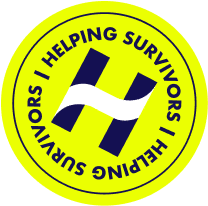Sexual Harassment in the Workplace

"*" indicates required fields

Author: Kathryn Kosmides
Survivor Advocate
Key Takeaways
- Workplace sexual harassment is any unwanted sexual physical or verbal contact or comments from someone at work, including executives, supervisors, coworkers, or customers.
- Sexual harassment in the workplace can take many forms such as inappropriate comments, unwanted touching, quid pro quo harassment, and beyond. In each scenario, the individual experience the harm
- Sexual harassment is against federal and state laws. Individuals who experience sexual harassment have legal rights and options, including seeking compensation through civil court by holding their employer and/or the perpetrator accountable. Most law firms take these types of cases on contingency, meaning there is no risk to seeking advice from an experienced law firm.
You expect your workplace to be a place where you feel safe and can perform your job without distractions or fear. You make friends with your coworkers and learn to trust them professionally.
However, the workplace can sometimes become a hostile environment. You may find a colleague or two who make you uncomfortable. It might not happen for years, or you may notice it on your first day.
They begin to single you out. Talk inappropriately in a sexual manner. They may make crude gestures, invade your personal space, or offer promotions and other benefits in exchange for sexual favors. This is workplace sexual harassment, and it can make your life extremely difficult.
We are here to listen and advocate for you.

What is Considered Sexual Harassment in the Workplace?
Sexual harassment in the workplace is unwelcome, unwanted, and nonconsensual behavior of a sexual nature that takes place in a work environment. It can also involve singling someone or a group of people out due to their gender or sexual orientation and teasing, bullying, or making offensive comments about them.
When it comes to sexual harassment, many people envision a male coworker “sexually harassing” a female coworker. However, this is just one possibility of sexual harassment in the workplace. The victim and harasser can be of any gender. They can be the opposite sex (man and woman) or the same (two women or two men). It does not matter.
Sexual harassment in the workplace can manifest in many different ways. It can include offensive comments or gestures, intimidation, quid pro quo, or bullying. The behavior creates a hostile and uncomfortable environment for the victims and others in the workplace who may observe this behavior and feel uncomfortable or intimidated
The following are examples of actions in the workplace that can be considered sexual harassment:
- Curse words or crude language in the context of gender or sexual orientation
- Sending messages (email or text) that have a sexual connotation or include photos or videos of a sexual nature
- Unwanted inquiries into one’s personal or sexual life
- Uninvited physical contact (it does not have to be in a sexual manner)
- Offensive jokes about sex
- Asking for sexual favors (sometimes in return for a promotion or work benefit, “quid pro quo”)
- Sending or showing photos of a sexual nature or pornography
- Unwanted offers to go on dates
- Being whistled at or subjected to other sexual-related noises or phrases (catcalling)
Note that this list is not exhaustive, and there can be other behaviors that you may have experienced that are considered sexual harassment.
Also, it does not matter if the person doing the harassment thinks their behavior is acceptable. It matters if the person being harassed thinks the behavior is inappropriate. So if you were uncomfortable with the behavior of someone at work, you might have been sexually harassed.
- What is Considered Sexual Harassment in the Workplace?
- What Should I do if I Experience Workplace Sexual Harassment?
- What is the Difference Between Sexual Harassment and Sexual Assault?
- Statistics on Workplace Sexual Harassment
- Laws Governing Sexual Harassment in the Workplace
- Impact of Being a Victim/Survivor of Harassment
- What Should I do if I see Sexual Harassment Occurring at my Workplace?
- Want To Speak With A Lawyer?
Who can be a victim of sexual harassment?
The victim of sexual harassment is anyone negatively affected by the words, gestures, or conduct of the harasser. The victim does not have to be the target of those words, gestures, or conduct as long as they experienced the behavior (i.e., heard or saw the harassment occur).
Who can be the perpetrator of sexual harassment?
In the workplace, the harasser can be the following persons:
- Victim’s supervisor or manager
- Another supervisor, though not the victim’s supervisor
- Coworker
- An employee in another department
The harasser might be a client or customer of the victim as well.
What Should I do if I Experience Workplace Sexual Harassment?
There are several paths you can take if you have experienced sexual harassment at your job.
One option is to tell the harasser to stop their behavior because it makes you uncomfortable. Only do this if you feel safe, and are able to do so in a safe environment with a trusted witness(es) present. It may help to bring a coworker you trust with you. If the harasser continues their inappropriate behavior, keep track of the harasser’s behavior in writing and the times you asked them to stop – make sure that all efforts are dated and include pertinent information such as the location (surveillance footage may be available) and any possible witnesses.
The next person to contact is your supervisor or someone in a position of authority. If the harasser is your direct supervisor, go to human resources or someone higher. If your company has an anonymous system for reporting employee complaints, you can take advantage of this as well. Remember that employers are required by federal law to investigate and act on any allegations of sexual harassment. Document efforts to contact your supervisor or HR in writing including the day and time of contact and any witnesses, especially if these efforts are made verbally and not through e-mail.
Per the EEOC (Equal Employment Opportunity Commission) an employer may be legally responsible when a supervisor commits harassment especially if they failed to take reasonable action to prevent harassment. If your employer does not take your report seriously, investigate appropriately, and respond to the investigation appropriately, you have a right to file a report with the EEOC. You should speak to a lawyer prior to filing and have them assist if possible.
The EEOC cites that reasonable efforts to prevent harassment may encompass the following: establishing policies and procedures to prevent harassment including a policy and system for reporting as well as investigating and responding to reports of sexual harassment. According to the EEOC:
“An employer’s anti-harassment policy should make clear that the employer will not tolerate harassment based on race, sex, religion, national origin, age, disability, or genetic information, or harassment based on opposition to discrimination or participation in complaint proceedings. The policy should also state that the employer will not tolerate retaliation against anyone who complains of harassment or who participates in an investigation.”
Helping Survivors of Sexual Abuse and Assault has many resources to guide you through reporting sexual harassment. If you receive no support from your company or are subjected to retaliation, contact a workplace sexual harassment lawyer immediately. From there, they can assist you with filing a lawsuit and seeking justice against the perpetrators.
What is the Difference Between Sexual Harassment and Sexual Assault?
Sexual harassment and sexual assault are not the same act, although some instances may overlap. Sexual harassment is a form of unwanted or unwelcome behavior of a sexual nature that affects the dignity of a person. This can range from inappropriate jokes, unwelcome comments about someone’s appearance, to more overt actions like unwanted physical advances or requests for sexual favors.
Sexual assault is a term that refers to any physical sexual activity or behavior that occurs without the explicit consent of the victim.
The umbrella of sexual assault can include rape, but it’s not limited to it. Sexual assault can also encompass a wide range of non-consensual physical sexual activities, including groping, forced kissing, or any other physical sexual conduct that is imposed on someone without their consent.
The key difference between sexual harassment and sexual assault lies in the nature and severity of the actions.
Sexual harassment often involves verbal or non-physical actions of a sexual nature that create a hostile environment for the victim. On the other hand, sexual assault involves physical sexual acts performed without consent.
Sexual assault is included in state and federal criminal codes, and the perpetrator can be prosecuted for such actions under applicable laws. Sexual harassment at work, on the other hand, is typically handled under civil law or internally within a company.
But sexual harassment can escalate to sexual assault when words and gestures turn to physical force or threat of force.
Statistics on Workplace Sexual Harassment
Because workplace sexual harassment can take many forms and impact anyone of any background, it happens far too often. These statistics begin to shed light on the prevalence of this problem and the ways in which it can impact individuals.
- Thirty-eight percent of women and 14 percent of men have experienced sexual harassment at work.
- Women are six times more likely to experience sexual harassment than men in male-dominated workplaces. In female-dominated workplaces, men are twice as likely to experience sexual harassment than women.
- 78.2 percent of sexual harassment charges filed between 2018 and 2021 were from women, and the remaining (21.8 percent) were filed by men, according to the Equal Employment Opportunity Commission.
- Less than one-third of individuals sexually harassed at work tell a supervisor, manager, or union. And only 6-13 percent of individuals file a formal complaint regarding sexual harassment in the workplace.
- 1 in 7 women and 1 in 17 men reported looking for a new job, changing jobs, or quitting due to sexual harassment and assault in the workplace.
Laws Governing Sexual Harassment in the Workplace
There are many protections in place against sexual harassment in the workplace. While there are federal laws that protect all workers across the United States, local laws govern many of the specifics such as reporting requirements, statute of limitations, and repercussions for individuals and institutions found guilty of sexual harassment in the workplace.
Federal Law
Title VII of the Civil Rights Act of 1964 prohibits discrimination based on sex. Sexual harassment in the workplace is considered a form of sex discrimination and is covered by Title VII. Under that law, employers with 15 or more employees must not discriminate on the basis of sex or tolerate sexual harassment in the workplace.
The law’s purpose is to provide a safe and productive work environment and a legal mechanism to hold employers responsible for a hostile work environment.
Here are two main points:
- An employer cannot retaliate against you for filing a complaint or speaking out against sexual harassment. Retaliation can include termination of employment, reassignment to a different department or location, or a lower salary. The Equal Employment Opportunity Commission reported that 40.8 percent of sexual harassment charges in 2021 were filed along with retaliation charges.
- An employer cannot ignore your complaint about sexual harassment in the workplace. Once learning about the complaint, they must investigate and take proper measures to stop the harassment.
If you experience retaliation for your complaint or lack of investigation, you can file a charge with the Equal Employment Opportunity Commission.
State Law
States have also implemented their own fair employment practice laws prohibiting sexual harassment. For example, California’s fair employment law, the Fair Employment and Housing Act, prohibits sexual harassment for all employers, not just those with 15 employees or more. It also mandates that employers with more than five employees undergo sexual harassment training.
The following states require at least some employers (either by industry or size of enterprise) to maintain workplace harassment and prevention policies:
- California
- Connecticut
- Washington D.C.
- Illinois
- Maine
- New York
- Oregon
- Rhode Island
- Vermont
- Washington
- Massachusetts
Impact of Being a Victim/Survivor of Harassment
Being the victim of sexual harassment can be traumatizing. The impact does not only have a physical effect on you, it can leave you with emotional and psychological impacts and an intense feeling of uneasiness whenever you go to work. Those who perpetrate or allow sexual harassment in the workplace to happen are contributing to a hostile work environment, which is also a legal standard most businesses must abide by.
The effects of experiencing sexual harassment can include:
- Alcohol abuse
- Anger
- Anxiety
- Depression
- Disturbances in your sleep/wake cycle
- Drug use
- Fear
- Feeling abused and violated
- Financial losses due to lost days of work
- Headaches
- Heart palpitations
- Helplessness
- High blood pressure
- High levels of stress
- Humiliation
- Low self-esteem
- Panic attacks
- Nervousness
- Post-traumatic stress disorder
- Sense of dread when going to work
- Suicidal thoughts
- Weight loss or gain
What Should I do if I see Sexual Harassment Occurring at my Workplace?
Bystander intervention is a highly effective deterrent to sexual violence in the workplace. You should only consider intervening on the spot if you feel that you can do so safely. Beyond confronting the perpetrator(s) of harassment, sexual assault and harassment policies encourage bystanders to ACT (Assist, Call for Help, Tell Someone). Bystander intervention programs encourage workplace wide awareness and emphasize the employer’s commitment to preventing harmful and/or dangerous situations in the workplace.
If you see someone else is the victim of sexual harassment at work, if you feel safe to do so, you can try to break it up and tell the harasser to stop. Maybe you are protecting the victim from what might become unwanted touching or contact. Perhaps the harasser will stop after you step in.
You can be the support the victim needs. Try to understand the situation and encourage the victim to report the harasser to the correct authorities if the harasser continues their inappropriate behavior. A bystander can also make a report to a supervisor or HR, especially if/when the behavior they witness has made them uncomfortable or is contributing to a toxic work environment.
Benefits of bystander intervention:
- Prevent harm to co-workers
- Support the victim and reduce the chance for victim blaming
- Create a workplace environment that is not conducive to harassment of any kind
Want To Speak With A Lawyer?





